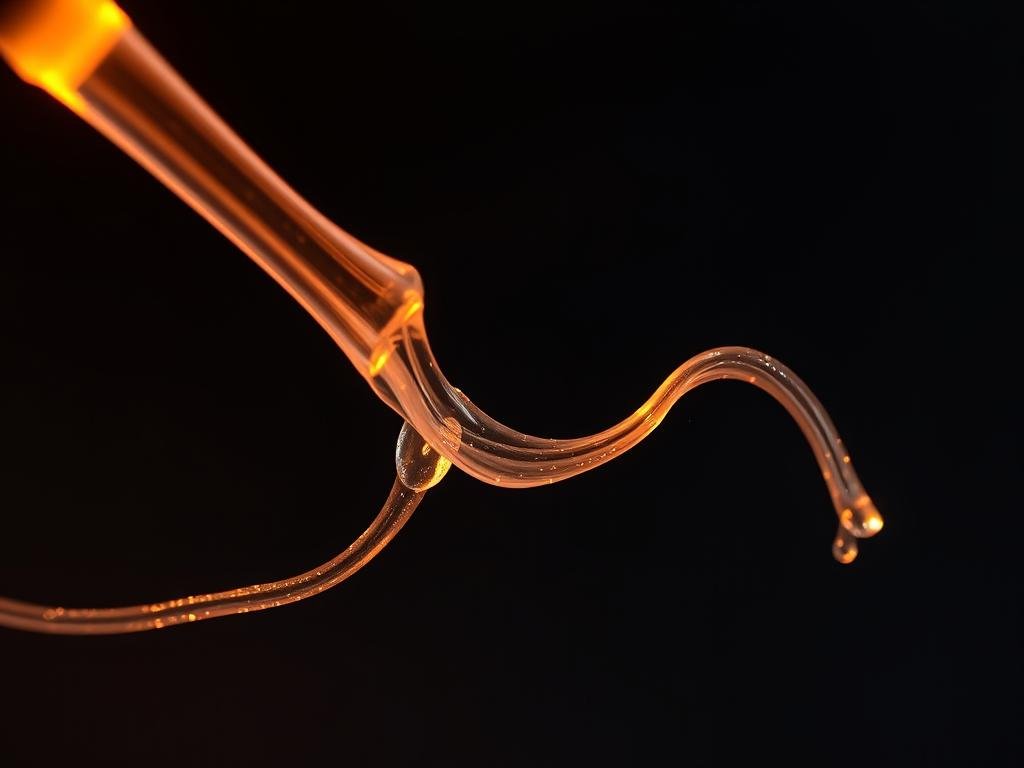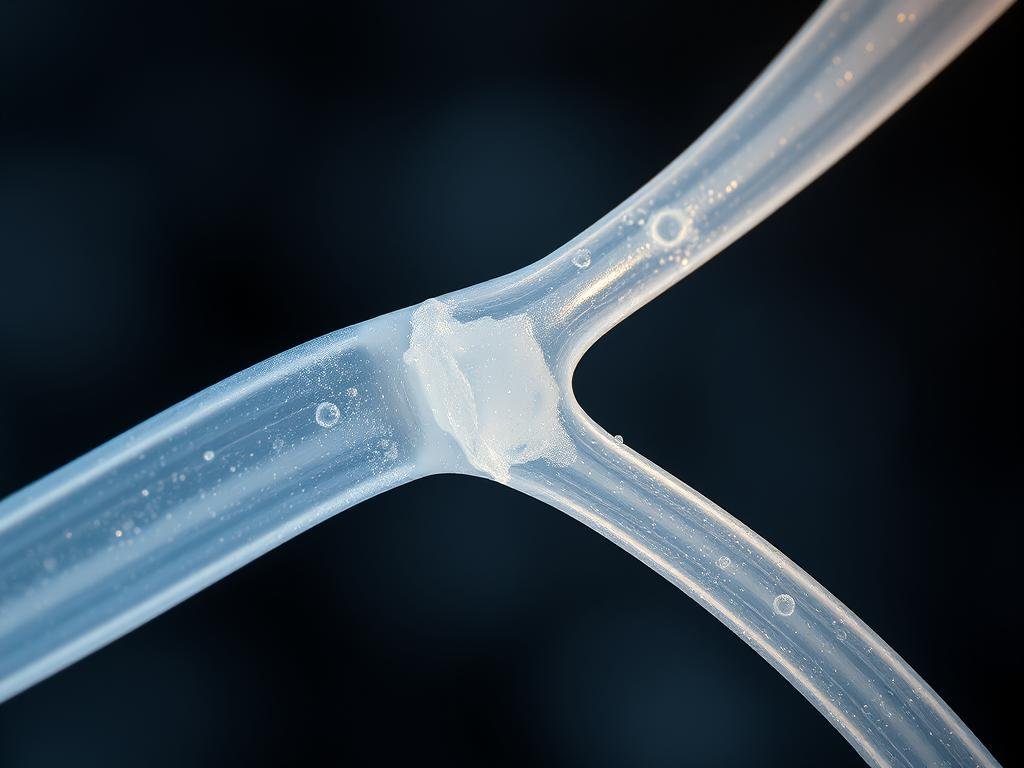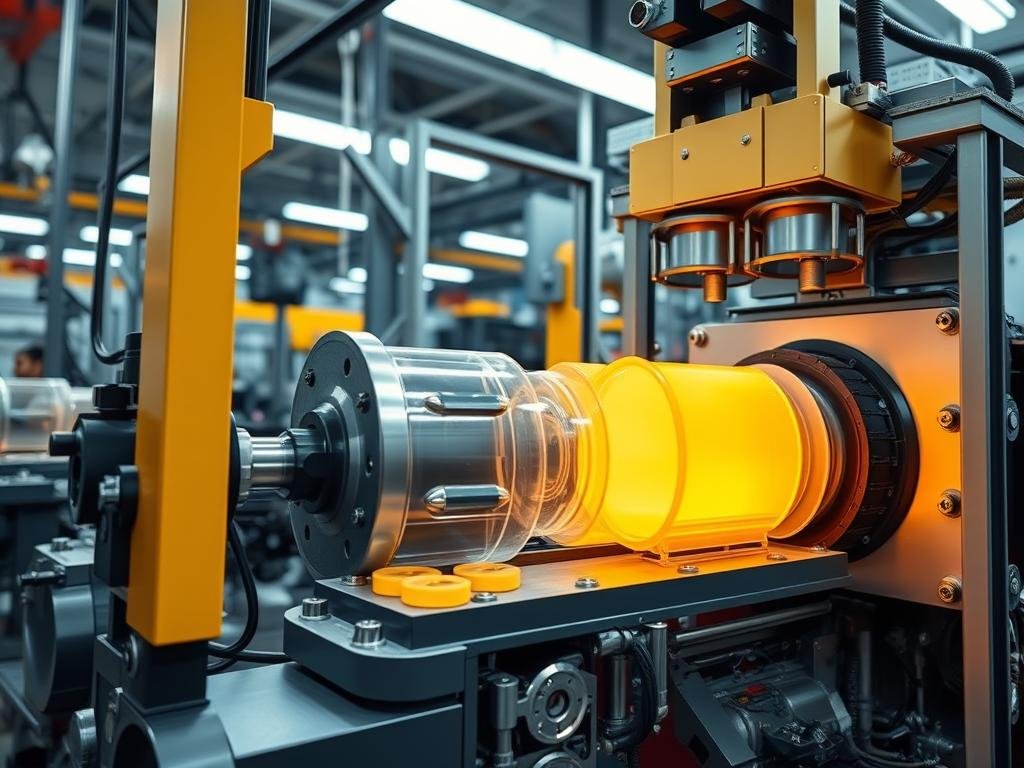尼龍是一種合成材料的家族 高分子 以其多功能性和廣泛的應用而聞名。以酰胺鍵結為特徵,這些熱塑性塑料可以熔融加工成纖維、薄膜和各種形狀。
The 屬性 尼龍的熔融行為等特性對於判斷其適用於不同用途至關重要。了解熱如何影響尼龍,對於製造商、工程師和消費者來說,都是優化性能和確保安全使用的關鍵。
這份全面指南將探討溫度對尼龍的影響,研究其熔化 point 各種尼龍類型及其熱性質。通過了解這些因素,讀者將獲得有關為特定應用選擇和加工尼龍的見解。
了解尼龍作為多功能聚合物
尼龍,化學上稱為聚酰胺,是一種合成聚合物,以其令人印象深刻的特性徹底改變了各行各業。它屬於聚酰胺家族,以其強度、耐用性和多功能性而聞名。尼龍的卓越強度與重量比以及出色的耐久性,使其成為各種應用中廣泛使用的材料。
尼龍是什麼?
尼龍是一種多功能的合成聚合物,具有機械性能的平衡組合,包括拉伸強度、耐磨性和柔韌性。它有多種類型,其中尼龍6和尼龍6,6最為常見。尼龍獨特的分子結構由酰胺鍵連接脂肪族或半芳香族基團,這種結構促成了其珍貴的性能。 Nylon’s adaptability makes it suitable for a wide range of industrial and consumer applications.
尼龍的歷史發展
尼龍的歷史發展代表了高分子科學中最重要的突破之一。由華萊士·卡羅瑟斯(Wallace Carothers)及其團隊於1930年代在杜邦(DuPont)研發,尼龍是最早的合成纖維之一。它徹底改變了紡織產業,並在之後擴展到無數工業和消費者應用。自誕生以來,尼龍已成為工程領域的基石材料,這得益於其令人印象深刻的性能和適應性。
Nylon’s transition from early textile applications to becoming a fundamental material in various industries is a testament to its versatility and the innovative spirit of its developers. Today, nylon continues to be a widely used material, serving specific industrial and consumer needs across multiple sectors.
尼龍熔點背後的科學
The science behind nylon’s melting point involves a deep dive into its chemical and crystalline structures. Nylon is a semi-crystalline 聚合物, 意味著其分子排列影響其熱行為。
Chemical Structure and Its Influence on Melting Behavior
尼龍的化學結構,特別是酰胺基團之間的強氫鍵,顯著促進其高 熔點. The arrangement of polymer chains and the degree of crystallinity play crucial roles in determining nylon’s thermal properties. Understanding the relationship between molecular weight, chain length, and 熔點 helps explain why different nylon formulations exhibit varying thermal properties.

Crystalline vs. Amorphous Regions in Nylon
尼龍的半結晶性質形成獨特的熔融曲線,與 晶體區域 在特定條件下融化 溫度 while amorphous regions soften over a range of 溫度. The degree of crystallinity affects not only nylon’s 熔點 但也包括相關的性能,例如拉伸強度、化學抗性和尺寸穩定性。Proper 溫度 在處理過程中的控制確保尼龍能夠正確固化,從而實現高效生產而不犧牲品質。
氫鍵和范德華力在內的排列 聚合物結構 產生熱阻,使尼龍適合用於高-溫度 applications. By understanding these factors, manufacturers can optimize nylon’s performance in various uses.
不同類型的尼龍及其熔點
不同類型的尼龍展現出一系列的熔點,對於它們在各行各業的應用至關重要。尼龍的熔點是一個關鍵的性質,影響其加工方式和最終用途中的性能。
尼龍6熔點
尼龍6的熔點約為220°C(428°F),在加工性與性能之間取得平衡。這使其適用於各種應用範圍,從紡織品到工程零件。
尼龍6,6 熔點
尼龍6,6的熔點較高,約為265°C(509°F),這轉化為優越的機械性能和耐熱性。這使其非常適合需要高熱阻的嚴苛環境。
尼龍12熔點
尼龍12,或稱聚酰胺12,的熔點通常約在178°C到180°C(352°F到356°F)。其較低的熔點有助於優異的加工性和柔韌性,使其適用於需要複雜形狀的應用。
尼龍6/10與6/12的熔點
共聚酰胺如尼龍6/10和6/12具有中等熔點。尼龍6/10的熔點約為223°C(433°F),而尼龍6/12的熔點則在217°C(422°F)範圍內。這些特性為特定應用提供了專門的性能特點,突顯了尼龍的多功能性。
不同尼龍類型及其熔點的比較分析有助於理解編號與其化學結構之間的關係,以及它們如何影響熔融行為和整體性能特性。這些資訊對工程應用中的材料選擇具有重要價值。
影響尼龍熔融行為的因素
了解影響尼龍熔融行為的因素對於優化其應用至關重要。尼龍是一種多功能的聚合物,廣泛應用於各行各業,從紡織到汽車零件。其熔融行為是一個關鍵的性質,決定了其加工方式和性能。

Moisture Absorption and Its Impact
吸濕性是影響尼龍熔融特性的重要因素。水分子可以作為塑化劑,可能將有效熔點降低30-40°C。正如業界專家所指出的,“水分的存在可能在加熱過程中引起水解,導致零件變得較弱”。為了減少這種情況,在加工前徹底乾燥尼龍顆粒是必要的,通常在80°C到90°C的溫度下烘乾數小時。
Additives and Fillers
添加劑和填充物的加入,例如玻璃纖維、碳纖維和阻燃劑,可以顯著改變尼龍的熔融行為和流動特性。這些添加劑可以提升材料的性能,但也可能改變其熔點和加工需求。例如,玻璃填充尼龍相較於未填充尼龍,具有較高的熔點和更佳的熱穩定性。
處理歷史與熱老化
Nylon’s processing history, including previous heat exposure, shear rates during molding, and cooling rates, can create a “thermal memory” that affects its subsequent melting behavior. Prolonged exposure to elevated temperatures can lead to chain scission, cross-linking, or oxidation, permanently altering its melting characteristics. Understanding these effects is crucial for predicting nylon’s performance in various applications.
基於尼龍熱性質的實用應用
The unique thermal properties of nylon make it an ideal material for various industries. Nylon’s well-defined melting point and flow characteristics enable its use in diverse applications, from consumer products to industrial components.
注塑成型應用
尼龍由於具有優異的尺寸穩定性和高精度,廣泛用於注塑成型。這使其適合用於生產用於消費品、醫療器材和汽車零件的複雜組件。

Textile and Fiber Applications
紡織業在纖維形成、拉伸和熱定型過程中,利用尼龍的熱性能。這使得能夠製造具有特定性能特徵的織物,應用範圍從運動服到工業紡織品。
Engineering and Automotive Uses
Automotive engineers utilize nylon’s combination of high melting point, strength, and wear resistance to replace metal components. This reduces vehicle weight while maintaining performance in high-temperature engine environments. Nylon is used in various automotive applications, including airbags, battery modules, and conveyor belts.
Nylon’s thermal properties make it a versatile material for various applications, including electrical connectors that require dimensional stability and insulation properties across wide temperature ranges. Its strength, resistance, and performance characteristics make it an essential material in modern manufacturing.
Processing Nylon at High Temperatures
To achieve successful injection molding with nylon, manufacturers must accurately control processing temperatures. This involves understanding the optimal temperature ranges for different types of nylon and taking steps to prevent thermal degradation.
Optimal Processing Temperature Ranges
The optimal processing temperature for nylon varies depending on its type. For instance, Nylon 6 should be processed at temperatures between 230°C and 250°C, while Nylon 6/6 requires a range of 270°C to 290°C. Pre-drying the nylon at 80°C for at least 4-6 hours is also crucial to remove moisture that could cause hydrolysis during processing.
Preventing Thermal Degradation
To prevent thermal degradation, it’s essential to limit residence time, use purging procedures, and consider the use of heat stabilizers for extended processing runs. These measures help maintain the material’s integrity and ensure consistent part quality.
Cooling and Solidification Considerations
Controlled cooling rates significantly affect the crystallinity development, internal stress formation, and dimensional stability of the final parts. A mold temperature of about 80-100°C is recommended for nylon processing. By carefully managing the cooling phase, manufacturers can optimize the properties of their nylon parts.
Conclusion: Maximizing Nylon Performance Through Temperature Control
To fully leverage nylon’s strengths, it’s vital to comprehend its melting point and thermal behavior. Understanding the intricate relationship between temperature and nylon’s properties is crucial for optimizing its performance across diverse applications.
Effective temperature management throughout nylon’s lifecycle, from resin production to end-use applications, is essential for maximizing its exceptional combination of strength, durability, and versatility. Emerging technologies, including advanced simulation tools and precise heating systems, are set to further enhance temperature control in nylon processing.
By considering the entire thermal history of nylon components, from processing temperatures to service conditions, engineers and manufacturers can design for optimal performance and longevity. This knowledge is invaluable for industries relying on nylon, enabling the creation of high-quality products that capitalize on the material’s unique properties.
